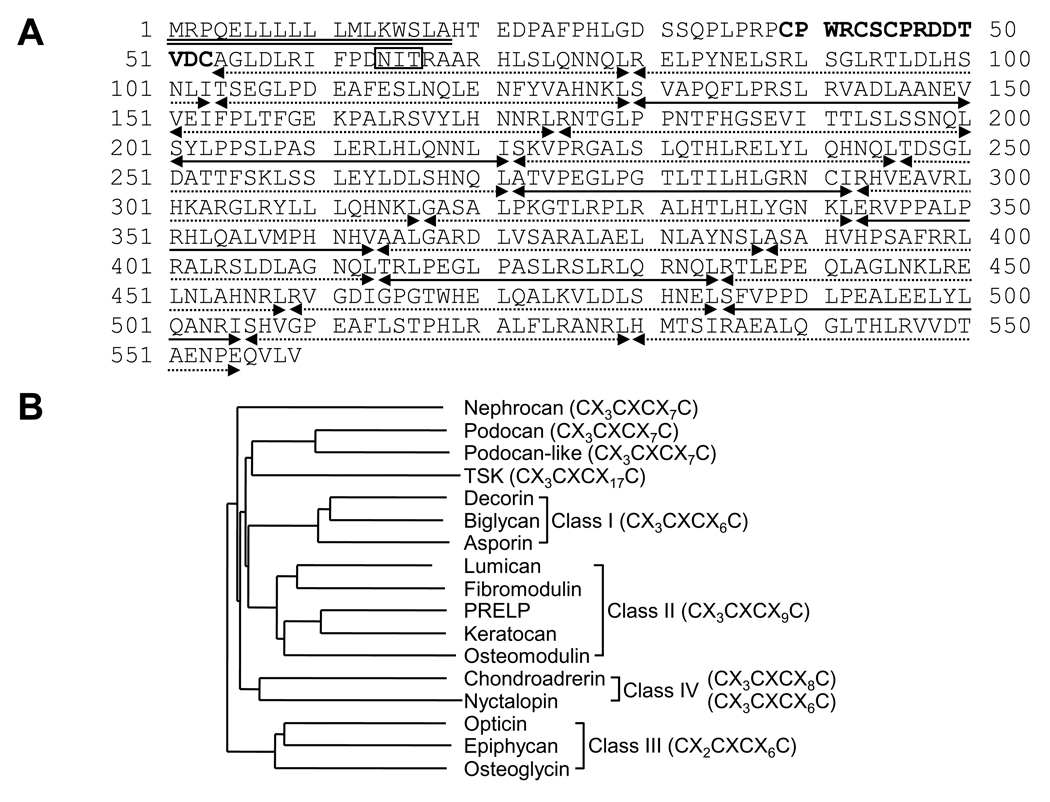Fig. 1.
The amino acid sequence and phylogenetic analysis of Podnl. (A) The deduced amino acid sequence of Podnl. The putative signal peptide sequence and cleavage site (indicated by a double underline) were predicted using the PSORT II program. The N-terminal cysteine cluster (CX3CXCX7C; C: cysteine, X: any amino acid) is indicated in bold letters. A potential N-glycosylation sites (NIT) is shown by an open box. Twenty-one LRR motifs are categorized by type-S or -T of LRR motif. Type-S LRR motif is indicated by a dotted line with arrows, while type-T is by a line with arrows. (B) Phylogenetic tree analysis of Podnl together with other mouse SLRP members. PRELP; proline/arginine-rich end leucine-rich repeat protein, TSK; tsukushi.

